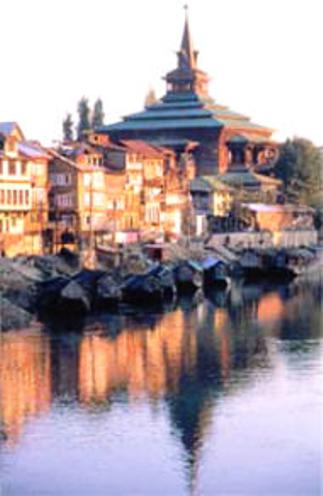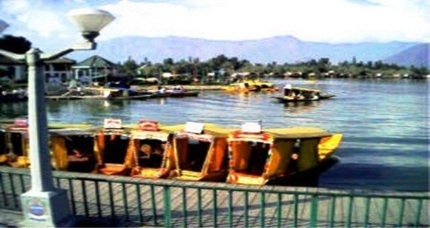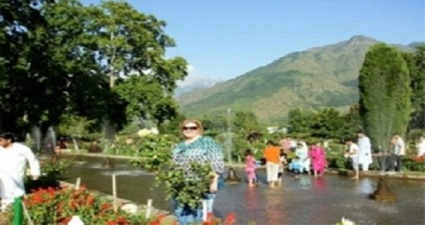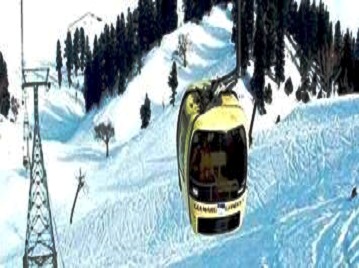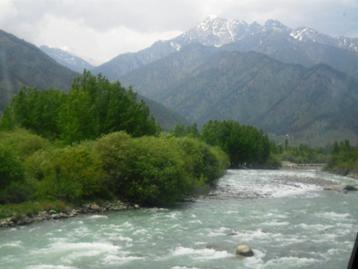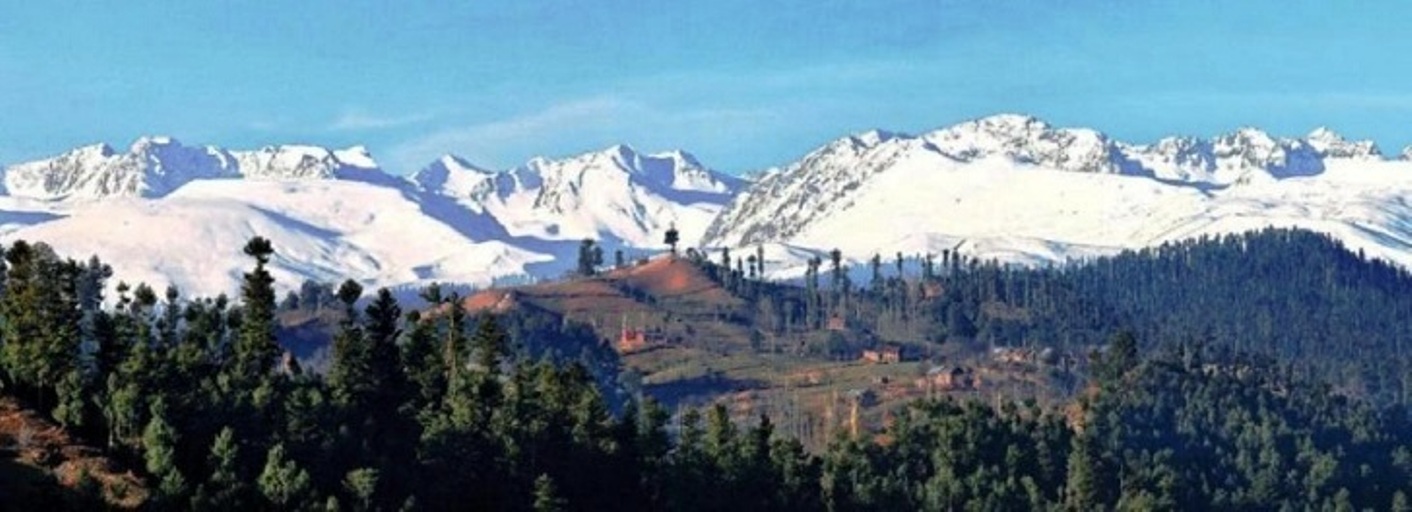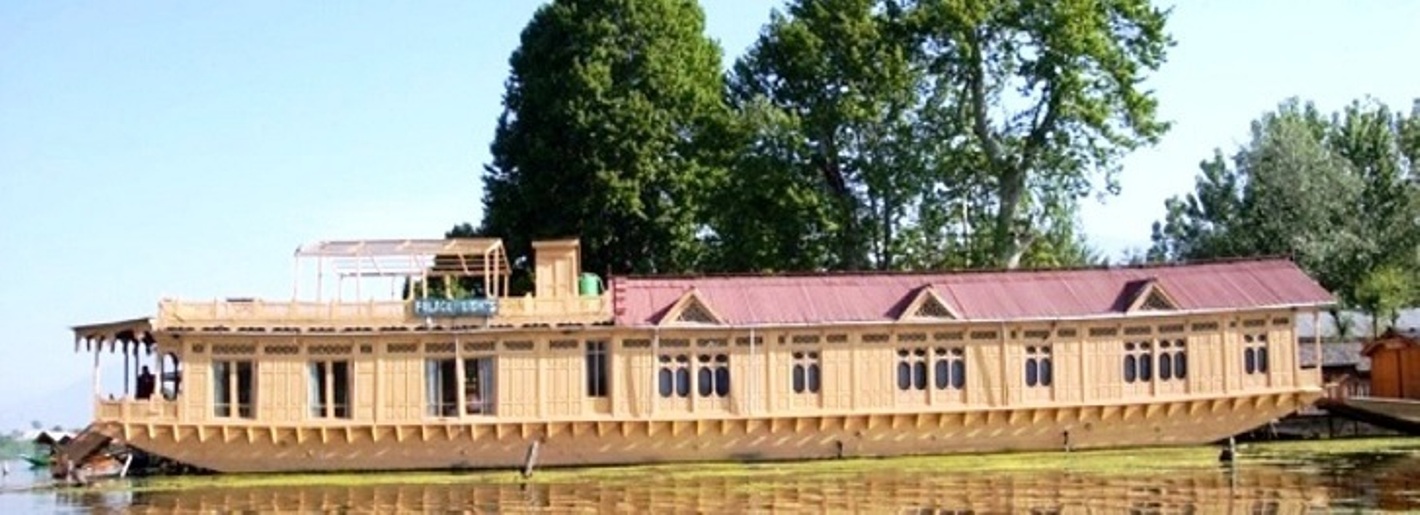

Jammu & Kashmir
The state of Jammu and is blessed with natural beauty resources and abundance of resorts, religious sites and shrines of all religions and people of composite culture. Jammu while a bastion of majority Hindu religion, Ladakh and majority Buddhist religion and Kashmir a majority of Muslim culture exist side by side with centuries of tradition of harmony and brotherhood. In Jammu region one can see beautiful Hindu temples and Dogra culture, while as in Ladakh region you can experience ancient Buddhist cultural activities and authentic old Monasteries with chanting monks. In Jammu you hear temple bells calling in the faithful, in Ladakh you hear Buddhist horns entice the faithful while in Kashmir Azaan from the minarets of Masjids and shrines call the faithful to worship the almighty creator. As you travel from Jammu to Srinagar on the zigzagging highway you will be mesmerized by the never ending sights of the Pir Panjal range peaks and verdant vistas. On the way you can see Patni-top, Kud, Banihal and the longest mountain Tunnel in the world, which cut travel time by four long hours.
Amongst experiences that Kashmir is famous as “Paradise on Earth” is Srinagar the capital city, the jewel of Kashmir with its ever famous Dal Lake, House boats, Shikara, Mughal gardens and lot more. Then it is Gulmarg the famous resorts always ever present in Bollywood films, Pahalgam the base of Amarnath Yatra and Sonamarg the meadow of Gold.
Srinagar Srinagar, is the summer capital of the state at an altitude of 1,730 m above sea level. The city lies on both banks of the Jhelum River flows from South to the North of the valley from Verinag Springs. The Dal and Nagin lakes enhance its picturesque setting, while the changing play of the seasons and the salubrious climate ensures that the city is equally attractive to visitors around the year. The city is famous for its lakes and houseboats floating on them.
Srinagar city established over 2000 years ago. The rule of Hindu kings in Kashmir ended in 1339. From 1420-1470, the valley came under the rule of King Zainul Abudin, the popular king known as Budshah by affection. Later on Mughal Emperor Akbar annexed Srinagar and included it in his domain. It was during the rule of Akbar that the striking mosques and gardens that it now proudly boasts of were built. Srinagar has several tourist attractions like the Dal Lake, the Nagin Lake, Shankar-Acharya Hill, and the Hari Parbat Castle on top of the Sharika Hill. The Dachigam National Park on the out –skirts of Srinagar.
The view from any of the old city's bridges is wholly and unmistakably Kashmiri. Old brick buildings line the banks. The distinctive pagoda-like roof of a mosque or a shrine enlivens the horizon. The old city also boasts of Kashmir’s many ancient shrines and mosques among which the shrine of Shah-i-Hamdan, situated between Habba Kadal and Fateh Kadal, is probably the most important. Shah-i-Hamdan, who came from Persia in the 13th century, was responsible for the spread of Islam in Kashmir. Chhatti Padshahi Gurudwara: The sixth Sikh guru travelled through Kashmir, stopping to preach occasionally. A gurudwara has been built at the exact site of each of these halts. The most important one among these is Chhatti Padshahi Gurudwara, situated near Rainawari. |
Nishat Garden "Garden of bliss," built on the eastern side of the Dal Lake, and is the largest Mughal garden in the Kashmir Valley. With the Zabarwan Mountains as its backdrop, Nishat Bagh commands a magnificent view of the lake beneath the snow-capped Pir Panjal mountain range that stands far away to the west of the valley. Nishat Garden was designed and built in 1633 by Asif Khan, elder brother of Nur Jehan. History has it that, when the Emperor Jehangir saw this garden the day of inauguration, in 1633, he expressed great appreciation of its grandeur and beauty. He is believed to have articulated his appreciation to Asif Khan, his brother-in- law, with the hope that he would gift it to him. As no such offer was made by Asif Khan, the emperor was piqued and ordered closure of the water supply to the garden. So in order to save his garden Asif Khan gifted the Nishat Garden to his sister Queen Nur Jehan, Emperor Jehangir ordered the water supply to be resumed, thus saving the beautiful Nishat Gardens. Nishat Gardens as laid out now is a broad cascade of terraces lined with avenues of chinar and cypress trees, which starts from the lakeshore and reaches up to an artificial façade at the hill end. Rising from the edge of the Dal Lake, it has twelve 12 terraces representing twelve Zodiacal signs. However, it has only two sections, namely the public garden and the private garden for the Zanana or harem. |
Shalimar Garden” the Garden of pleasure” is a Mughal garden in Srinagar, linked through a channel to the northeast of Dal Lake, on its right bank located on the outskirts of Srinagar city. The Garden was built by Mughal Emperor Jahangir for his wife Noor Jahan, in 1619, considered the high point of Mughal horticulture in Kashmir. Emperor Jahangir and his wife Nur Jahan were so enamored of Kashmir that during summer they moved to Srinagar with their full court entourage from Delhi at least 13 times. Shalimar Gardens became their imperial summer residence and the Royal Court. The garden, as finally laid out, covers an area of 31 acres. The garden has three terraces fitted with fountains and with chinar sycamore) tree-lined vistas. The Shah Nahar (water stream) is the main feeder channel to all the terraces. Each one of the three terraces has a specific role. The garden was linked to the open Dal Lake water through a canal of about 1.6 km in length to facilitate boat transport as the main mode of travel. Willow groves and rice terraces fringed the lake edge. Broad green paths bordered the lake with rows of chinar trees. The architectural details of the three terraces of the garden are elaborate. The first terrace is a public garden or the outer garden ending in the Diwan-e-Aam. In this hall, a small black marble throne was installed over the waterfall. The second terrace garden along the axial canal, slightly broader, has two shallow terraces. The Diwan-e-Khas, accessible only to the noblemen or guests of the court. In the third terrace, the axial water channel flows through the Zenana garden. At the entrance to this terrace, there are two small pavilions or guard. Shah Jahan built a baradari of black marble, called the Black Pavilion in the zenana garden. It is encircled by a fountain pool that receives its supply from a higher terrace. A double cascade falls against a low wall carved with small niches. Another unusual architectural feature mentioned is about the doors of the Baradari. In the garden complex, the Baradari had four exquisite doors made of stones supported by pillars. |
Chashma Shahi Garden, number 3 of the 3 Mughal gardens built in 1632 AD around a spring. Ali Mardan Khan, a governor of Mughal emperor Shah Jahan as per the orders of the Emperor, as a gift for his elder son Prince Dara Shikoh. The garden is located in the Zabarwan Range, overlooking Dal Lake in Srinagar. Raj Bhawan the Governor house is nearby. Cheshma Shahi is perhaps the smaller than Nishat and Shalimar gardens, but really beautiful with breath taking views and grand variety of dazzling flowers. |
Gulmarg a hill station, popular skiing destination, lies in a cup shaped valley in the Pir Panjal Range of the Himalayas, at an altitude of 2,650 m, at a distance 56 km from Srinagar. The meadows are interspersed by enclosed parks and small lakes, and surrounded by forests of green pine and fir. There is horseback riding to Khilanmarg and a chairlift for an aerial view. Gulmarg features a lovely golf course-the highest in the world during summer time. In winter Gulmarg’s natural slopes turn into the premier skiing resort. Among the multitudes of slopes, there are a few which are serviced by ski lifts. Most of the skiing becomes centered on these slopes, with ski runs ranging from 500 yards to 4 miles. Skiing and other winter sports in Gulmarg are carried out on the slopes of Apharwat peak at a height of 4,267 m. Many points on Apharwat peak and Khilanmarg offer a panoramic view of Nanga Parbat and Harmukh mountains. |
Pahalgam a popular tourist destination and hill station on the banks of Lidder River at an altitude of 2,200 m. Breathtaking views, is Kashmir's premier resort, deliciously cool even in the height of scorching summer heat. Aru, Situated 7300ft. up at the confluence of the streams flowing from Sheshnag Lake and the Lidder River.Pahalgam not only is the base of trek to Kolahoi glacier, climbing from 1120ft. up to 13000ft. descending from twin peaks at 17400ft.that tower majestically overhead, a truly magnificent sight. Pahalgam is also the starting point of the annual Amarnath Yatra. Chandan wari, 16 kilometers from Pahalgam is the starting point of the Yatra that takes place every year in the months of July–August. There are many species of rare, endangered and protected species. The main species are hangul, musk deer, brown bear, Leopard, rhesus macaque, grey langur and more. Wild bears still roam much of the area, and local villagers are on constant alert for their presence. With the abundance of fresh trout in the rivers and local farm animals, they have plenty to eat. The area houses a good population of pheasants and upland birds apart from other species, both resident and migratory. |
Sonamarg a distance of about 84 km from Srinagar at the head of the Sindh valley. The drive through here presents a spectacular facet of the countryside. Sonamarg in comparison to other hill stations of Kashmir, Sonamarg has more rocky rugged mountain and pine forests. There are attractive walks and option of pony ride to the Thajiwas glacier. From Sonmarg, trekking routes lead to the Himalayan lakes of Vishansar Lake, Krishansar Lake, Gangabal Lake and Gadsar Lake, stocked with Snow trout and Brown trout and Satsar, glacier-fed and surrounded by banks of alpine flowers. Sonamarg is the gateway to Ladakh and Kargil via the zigzagging Zoji La Pass. Sonamarg gets the highest amount of snowfall from End of October to March providing winter lovers an early opportunity to take advantage of winter sports delights. |
